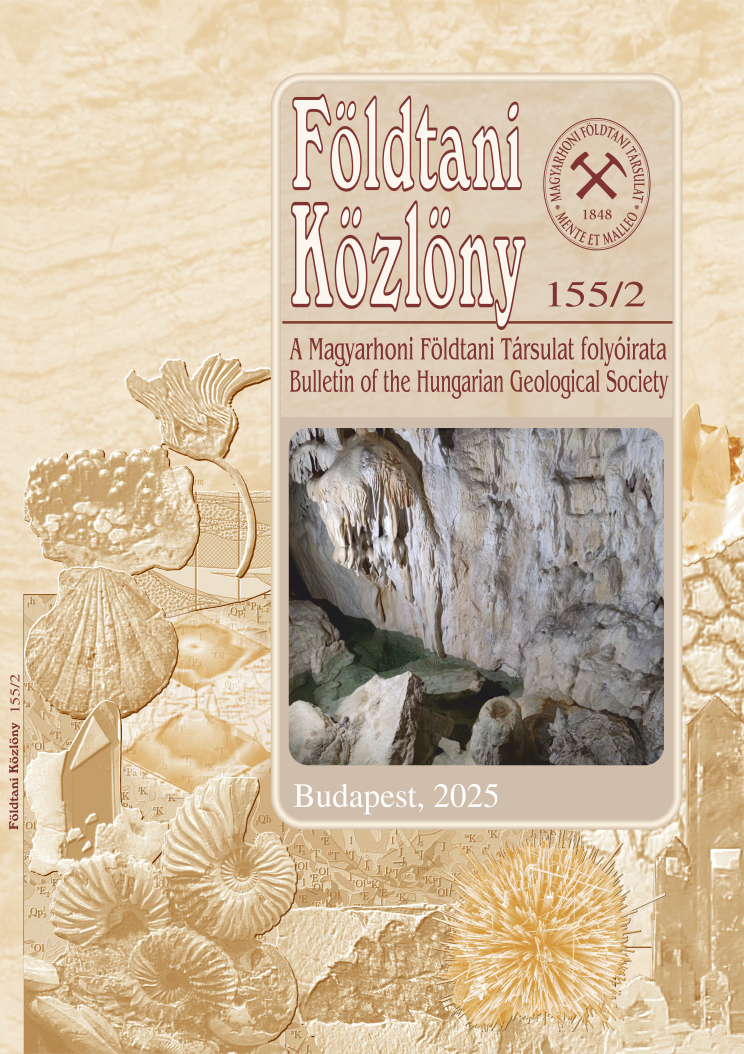The Late Cretaceous continental vertebrate fauna from the Bakony Mountains I: fishes, amphibians, turtles, squamates
Abstract
Since its discovery in 2000 the Iharkút Late Cretaceous continental vertebrate locality has yielded a large
number of bones. The locality is an open-pit bauxite mine near the village of Iharkút in the northern
Bakony Mts, western Hungary. The bones were found in the Upper Cretaceous (Santonian) Csehbánya
Formation, which is an alluvial floodplain deposit, mainly consisting of variegated clays, siltstones, sand
and sandstones. Most of the remains were yielded by a bone-bed type layer, deposited as a result of a
sudden flood. In this sediment all vertebrate remains are isolated bones of different animals.
Fish remains are abundant among these bones. Three taxa are present in the material. One of them is
an indeterminate pycnodontiform represented by several hundreds of isolated teeth and 18 lower jaws.
These jaws bear 3-4 rows of characteristic teeth. Pycnodontiform fishes are mainly marine, but from a
few localities they were identified in fresh-water sediments, similar to the Iharkút locality.
The other two fishes are lepisosteiform ones identified as Lepisosteus sp. and Atractosteus sp. Lepisosteus
is represented by teeth with a simple, pin-shaped apex and by a few ganoid scales. Atractosteus can be
identified in the material after teeth similar to those of Lepisosteus but having compressed, lance-like
apexes, and after three characteristic vertebrae. These are the oldest known European Late Cretaceous
occurrences of lepisosteiforms. The same two genera were also recognised in the Late Campanian Lano
(Spain) locality.
The only amphibian remains found at the locality were indeterminate albanerpetontid lower jaws.
The original number of teeth might have been between 20-23. The tooth crowns are broken. In the
Mediterranean, albanerpetontids are known from various Late Createaceous localities, such as Lano and
the Hafeg Basin (Transylvania). The Hungarian remains indicate the presence of the group in the region
during the Santonian.
The most common vertebrate fossils in the material are turtle remains, mostly indeterminate shell
fragments. A new taxon was identified from the locality, represented by two skulls and a partial carapace.
It belongs to the family Bothremydidae, and it is closely related to Foxemys described from the
Campanian of southern France. The members of this family are well known from the Campanian and
Maastrichtian localities of southern France, Spain and Portugal as well as from Africa, India and South
America.
Squamate remains represent a significant part of the Iharkút material. Four taxa were identified. One
of these is a medium-sized indeterminate lizard represented by a single fragmentary dentary, with no
teeth preserved.
The second one is an indeterminate scincomorph known from a dentary fragment bearing teeth with
laterally compressed assymmetric bicuspid crowns. The dentary is very similar to an indeterminate
scincomorph described from Lano.
The third squamate is known from six more or less preserved dentaries, and has been assigned to the
polyglyphanodontine lizard genus Bicuspidon on the basis of the morphology of its heterodont dentition.
The genus is known from the Albian-Cenomanian of North America and from the Maastrichtian of the
Ha{eg Basin.
The most abundant squamate in the Iharkút fauna is a large mosasaur. More than a hundred isolated
bones of different individuals were identified. This new primitive mosasaur, uniquely among mosasaurs
adapted to a freshwater environment and was a top predator of the waters of the area. It shows a close
relation with Tethysaurus nopcsai from the Turonian of Morocco.











